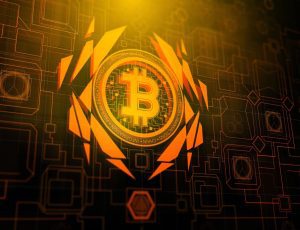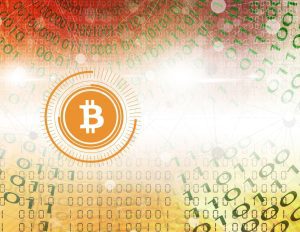This Bitcoin Ordinal protocol is like a special language for the smallest parts of Bitcoin, called satoshis. In this article, let’s look into what exactly Bitcoin Ordinals are, how they work, and why they matter for everyone interested in cryptocurrencies.
What Is Bitcoin Ordinals?

Ordinals is like a super cool tool and changes how we look at the smallest pieces of Bitcoin, the satoshis.
It’s created by someone named Casey Rodarmor, and it uses two important upgrades to the original Bitcoin system: Segregated Witness (SegWit) and Taproot. These upgrades made it possible to give each tiny satoshi a unique name and also allowed extra information to be added to the Bitcoin system.
Segregated Witness and Taproot
To understand Ordinals, we need to talk about Segregated Witness and Taproot. Segregated Witness is like a superhero upgrade that separated important information from regular transactions.
This separation made room for special information, called witness script, to be stored in a different part of the blockchain. This change not only made the blocks bigger but also made it possible to add cool stuff like pictures and videos directly to the blockchain.
Now, Taproot is another superhero upgrade. It brought a new way of writing addresses for Bitcoin. Bitcoin Ordinals uses this new address style to identify specific satoshis. So, thanks to SegWit and Taproot, Bitcoin Ordinals can make what we call Ordinal NFTs – special tokens on Bitcoin that are not like the others.
The Rise of Ordinal NFTs
Normally, NFTs are like special certificates for digital things, saying who owns what. But on some blockchains, like Ethereum or Solana, these certificates only point to some information stored somewhere else. Bitcoin Ordinals, however, changes this game.
Ordinal NFTs, born from Bitcoin Ordinals, are not just certificates; they are like treasure chests with the actual digital thing inside them. When you make an Ordinal NFT, you send a special tiny part of Bitcoin, called ordinal SAT, to a special wallet.
You also add some extra information as part of this special transaction. Once this is done, the extra information gets permanently attached to the first tiny part of Bitcoin in the transaction.
The Talk About Bitcoin Ordinals
Even though Bitcoin Ordinals bring lots of exciting possibilities, not everyone agrees on how good they are. Some people worry that using up space for these special tiny parts might make it more expensive for everyone to use Bitcoin.
They think it could slow down how fast transactions happen and make it more costly. On the other side, there are people who see beyond these worries. They imagine that Bitcoin Ordinals can do more than just make certificates; they could help Bitcoin do more things beyond just sending money.
People who like Bitcoin Ordinals think it could be used for more than just making special tokens. They dream about attaching these tiny parts to other important things, like tokens for safety or stablecoins. They even talk about making smart contracts with Bitcoin, something like digital agreements that work automatically.
Bitcoin Ordinals is like a new chapter in the big book of Bitcoin. Even though some people worry about it, others see it as a chance for Bitcoin to do more than just be money.
So, whether you’re a seasoned crypto enthusiast or just dipping your toes into the world of blockchain, keep an eye on Bitcoin Ordinals; it’s a small but powerful player in the ever-expanding universe of digital currencies.
See Also: Grayscale Bitcoin Trust Surpasses Nvidia with 220% Yearly Gain
Understanding How Bitcoin Ordinals Work

Let’s look into the inner workings, and grasp why they’re important.
How Bitcoin Ordinals Work
At its heart, Bitcoin Ordinals functions by embedding extra data directly into individual satoshis. Each satoshi gets a serial number based on when it was mined on the Bitcoin blockchain. This serial number becomes a special identifier for that satoshi, and the Ordinals protocol lets users add even more information, making each one stand out.
The process of adding this extra information, called inscribing, is a crucial part of how Ordinals work. By attaching things like pictures or text, users can turn regular satoshis into unique digital assets. This feature opens up exciting possibilities, especially for creating non-fungible tokens (NFTs) and other exceptional tokens directly on the Bitcoin blockchain.
Mining Bitcoin Ordinals: A New Twist in the Tale
Mining Ordinals is a bit like the regular process of creating new Bitcoin, but with a special twist. When we say Ordinals are mined, it means they are created using a specific set of rules.
What sets them apart is that they point directly to data inscribed on the Bitcoin blockchain. This is different from other blockchains, like Ethereum or Solana, where NFT information is usually stored in a different place.
What’s unique about Ordinals is that they keep the extra data right on the blockchain. This decision adds an extra layer of security, making sure that the information is safe, unchangeable, and durable, just like the core principles of the Bitcoin network.
Trading with Bitcoin Ordinals: Buying, Selling, and Swapping
Ordinals, once created, can be traded just like other digital assets. Various marketplaces, such as Ordinals Wallet and OKX, provide platforms for people to trade these unique digital treasures.
It’s important to note that the market for Ordinals is not as busy as markets for other digital assets. This means there might be less activity and interest, so it’s wise to do some research before diving in.
Trading Ordinals typically involves visiting a marketplace, creating or connecting a Bitcoin wallet, making sure there’s some Bitcoin in the wallet for trading, exploring different collections of Ordinals, and finally, using the connected Bitcoin wallet to make purchases. Keep in mind that not all Bitcoin wallets support Ordinals, so using specific wallets like Ordinals Wallet, Xverse, or UniSat is recommended.
Bitcoin Ordinals vs. Regular NFTs: What Sets Them Apart
One big difference between Ordinals and normal NFTs lies in how they store data. Regular NFTs on other blockchains usually store just a web link or some information away from the blockchain.
But Ordinals store the content – the pictures, videos, or whatever you inscribe – right on the blockchain. This choice aims to make Ordinals more decentralized and resistant to censorship, even though it comes with a bit more cost and limited size.
Another interesting point is how they decide what’s rare and valuable. Regular NFTs often depend on the rarity of the artwork or how few there are. Ordinals also consider these factors, but they might look at important moments in Bitcoin’s history linked to certain satoshis. For instance, an Ordinal inscribed on a new block or during a significant event might be seen as more special and valuable.
The Impact of Bitcoin Ordinals: Stirring Conversations in the Bitcoin Community
Ordinals have caused quite a stir among Bitcoin users, sparking debates and discussions. Some folks love the idea, seeing it as a clever way to make Bitcoin more sustainable over time. They believe it can attract new developers and users who were into other cryptocurrencies before.
Supporters also claim that Ordinals are more secure, decentralized, and resistant to censorship compared to regular NFTs, which often rely on middlemen and third-party platforms. However, not everyone is on the same page. Critics argue that Ordinals might be a misuse of the Bitcoin network, using up its resources and potentially causing problems like higher fees and network congestion.
Beyond NFTs: Imagining More Uses for Bitcoin Ordinals
While Bitcoin Ordinals have mostly been about creating NFTs, some dreamers see broader possibilities. Instead of just making unique digital assets, they imagine using Ordinals for other important things. This could include attaching them to security tokens or stablecoins, making smart contracts with Bitcoin, and introducing Bitcoin to more people.
The inner workings of Ordinals represent a big shift in how we see the tiniest parts of Bitcoin. The protocol’s ability to give each satoshi its own identity and include extra data opens up new doors for creating unique and special digital assets right on the Bitcoin blockchain.
As discussions continue within the Bitcoin community, the impact of Bitcoin Ordinals on fees and its potential for wider applications will be something to keep an eye on in the ongoing of blockchain technology.
See Also: Bitchez NFT
Comparing Bitcoin Ordinals and NFTs

Two key players have taken the stage: Bitcoin Ordinals and Non-Fungible Tokens (NFTs). To really get what makes them tick, let’s break down the differences between Bitcoin Ordinals and NFTs in a straightforward way.
We’ll look at how they store data, what makes them valuable, their mining methods, their impact on the community, and where they might be headed.
Meet Bitcoin Ordinals and NFTs: The Basics
Before we continue to look into the comparisons, let’s get the basics straight.
Bitcoin Ordinals
Bitcoin Ordinals is like a special code that gives individual tiny bits of Bitcoin, called satoshis, their own unique ID. It adds extra details, known as inscriptions, directly onto the Bitcoin blockchain, creating special digital things.
NFTs:
Non-Fungible Tokens, or NFTs, are like digital certificates that prove you own something unique, like digital art or a virtual item in a game. Unlike regular tokens, you can’t split them into smaller parts.
1. How They Store Information
Bitcoin Ordinals:
Bitcoin Ordinals keep it simple. They put everything – pictures, videos, or whatever you add – right on the Bitcoin blockchain. This makes them more resistant to being controlled by a single authority, but it can cost a bit more and has some size limitations.
NFTs:
NFTs, especially on Ethereum, usually keep the actual stuff – like the picture or video – somewhere else, not on the blockchain. They just put a link or some details on the blockchain. It’s like having a treasure map instead of keeping the treasure in your backyard.
2. What Makes Them Special
To make Bitcoin Ordinals special, it’s not just about how rare the item is or how good it looks. They might also look at important moments in Bitcoin’s history linked to certain tiny bits of Bitcoin. For example, the first Ordinal added to a new block might be seen as more special.
For regular NFTs, it’s mostly about how unique and rare the digital stuff is. Artists, limited numbers, and how cool it looks all play a part in deciding how valuable an NFT is.
3. Mining Methods
When we say Bitcoin Ordinals are mined, it means they’re made using a special set of rules. The process is called proof-of-work (PoW), and it involves solving tricky math problems. This makes sure the network stays secure. But, it also needs a lot of computer power and uses up quite a bit of energy.
Many NFTs now use proof-of-stake (PoS) or other ways to create new ones. PoS is like a more energy-efficient way, but it might not be as secure as PoW.
4. Impact on the Community
Bitcoin Ordinals have got people talking. Some really like the idea, saying it’s a smart way to make Bitcoin last longer and get more people interested. They think Ordinals are safer and more resistant to being controlled by just a few big players.
Regular NFTs have become super popular, especially for artists. They’re a big hit, but some folks worry about the energy it takes to make them, especially when they use PoW.
While Bitcoin Ordinals have mostly been about making special digital things, some people dream about using them for even more. They imagine attaching these special bits of Bitcoin to other things like security tokens or stablecoins. They even think about making smart contracts with Bitcoin. It’s like opening up Bitcoin to a bigger audience.
NFTs have already gone beyond just digital art. They’re in games, virtual land, and music. People love how versatile they are, and that’s made them a big deal in the creative world.
5 . How Busy Are the Markets?
The market for Bitcoin Ordinals isn’t as busy as other digital asset markets. There’s not as much activity or interest, so anyone thinking of getting into Ordinals needs to be careful and do some research first.
NFT markets, especially on Ethereum, are buzzing with activity. Big sales of NFT art and famous brands getting involved have made NFTs a major talking point.
Both bring something unique to the table, from how they store data to what makes them valuable. As discussions keep going and new ideas keep popping up, having both Bitcoin Ordinals and NFTs in the mix makes the journey of blockchain technology even more interesting.
See Also: Understanding NFT Development: 4 Important Steps For NFT Development
Conclusion

Bitcoin Ordinals, with its focus on individual satoshis and direct on-chain inscriptions, offers a fresh approach, sparking debates and discussions within the Bitcoin community. The protocol introduces a novel method for creating unique digital assets, albeit with considerations around cost and size limitations.
On the other hand, NFTs have gained widespread popularity, especially in the creative realm, with artists leveraging them for various forms of digital art and entertainment. Their versatility extends beyond traditional artwork to gaming, virtual real estate, and music, making them a significant player in the blockchain space.
Both Bitcoin Ordinals and NFTs bring distinctive features to the table, from their storage methods to how they determine value. Bitcoin Ordinals, though less active in the market currently, is seen as a potential avenue for broader applications, including smart contracts and expanding Bitcoin’s use beyond financial transactions.
As these technologies evolve, the coexistence of Bitcoin Ordinals and NFTs highlights the diverse and dynamic landscape within the blockchain ecosystem.
We Hope you’ve learned a lot from this article!! We’re glad you did. Join our telegram community to get up-to-date news, educational materials, free online classes, market analysis, and crypto futures trade signals that will help you grow and become profitable